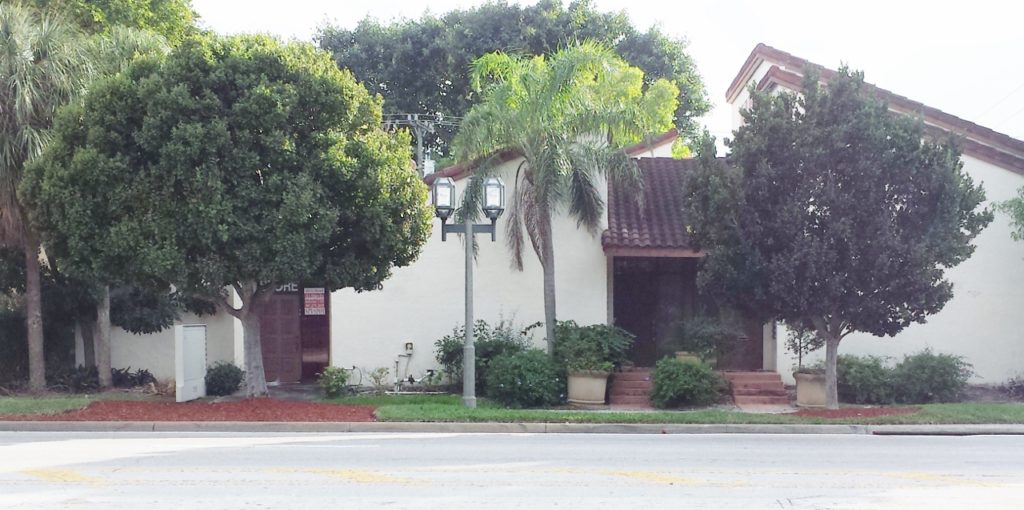
Pigeon Plum
Coccoloba diversifolia
Pigeon Plum is widely used in landscapes and yards where a moderate sized tree with a tight rounded crown is needed. Its cousin Seagrape has similar, but rounded leaves and branches that spread out and basically take over the yard. Both trees in picture are Pigeon Plums.
The Leaves of Pigeon Plum are oval and from two to six inches long. This is where the diversifolia species name comes from. Young leaves are reddish and become dark green. There is a small weevil that will eat holes in the leaves of unhealthy trees. Just fertilize if necessary and the new growth will be fine. See this link for more info on pests.
Some salt air is tolerated considering that Pigeon Plum is native to our coastal hammocks from the Keys to Brevard County. Salt water flooding is not tolerated and rich soil is prefered. Once established, it becomes tolerant of long periods of drought.
The bark of Pigeon Plum is blotchy and provides interest to the landscape when combined with other trees with flaking bark. These include Gumbo Limbo, Simpson Stopper, Soldierwood and Poisonwood.
Many other tall hammock species can be added as well including Wild Tamarind, Paradise Tree, Redbay, Satinleaf, West Indian Cherry, Mastic and Jamaican Dogwood. These all grow to 40 or more feet like the Pigeon Plum.
The understory can include shade tolerant shrubs and groundcovers including Wild Coffee, Marlberry, Snowberry, Coontie, Wild Plumbago, Coastal Foxtail, Florida Thatch Palm, Key Thatch, Silver Palm, Dicliptera, Basketgrass and Boston Fern.
You will need at least two Pigeon Plum in order to get fruit. The trees are dioecious, so either plant several and remove the extra male trees when the females start fruiting or purchase plants that have already fruited in order to tell which ones are female. Birds and mammals love the fruit and the flowers attract butterflies.
The fruit of Pigeon Plum are dry by the time they fall from the tree so there is little mess compared to other more juicy berries like those of Seagrape. Both trees have edible fruit.